
[Untitled]: photo by Tonatiuh Cabello, 4 March 2017
You have to dive down, as it were,
and sink more rapidly
than that which sinks in advance of you.
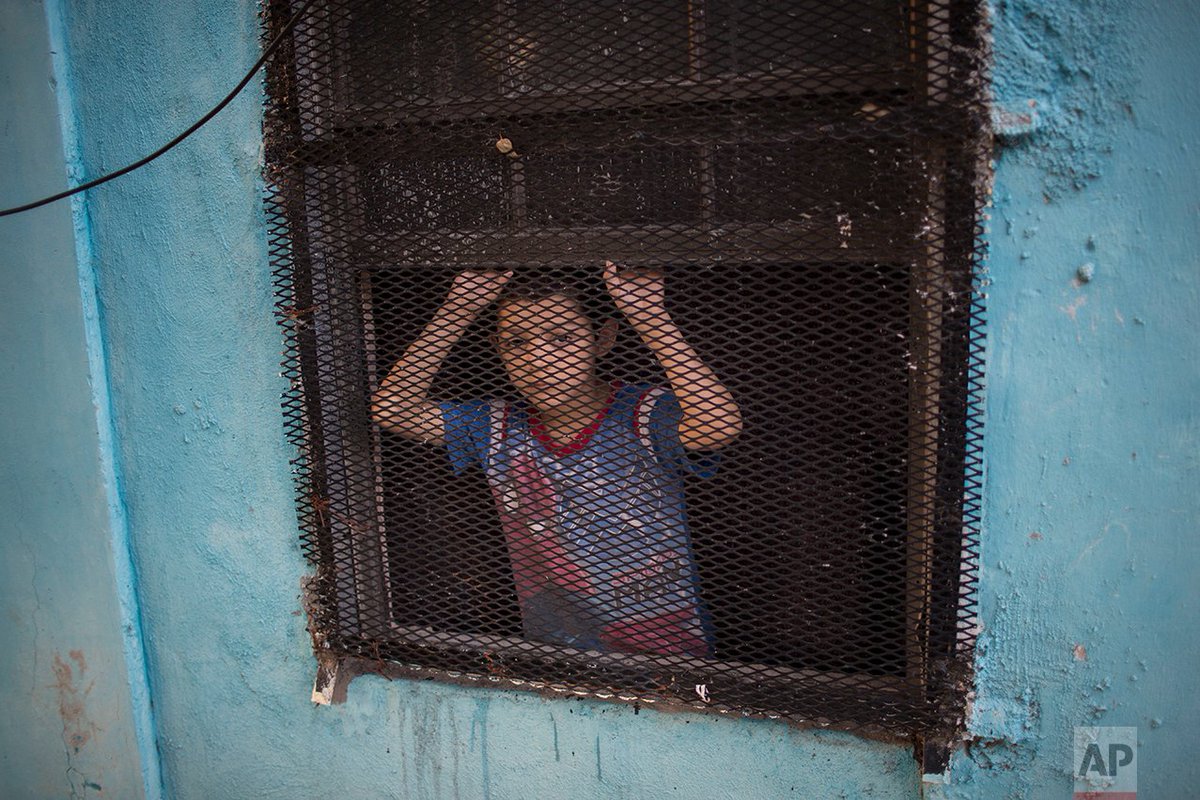
A boy peeks out of the window of his house in Nuevo Laredo, Tamaulipas state, Mexico, across the border from Laredo in the U.S, on Friday: photo by Rodrigo Abd/AP, 24 March 2017


The Tower of Babel (detail): Pieter Bruegel the Elder, 1563, oil on oak panel (Kunsthistorisches Museum, Vienna)

_MG_2195: photo by Filiberto Morales, 18 February 2017

_MG_2195: photo by Filiberto Morales, 18 February 2017

_MG_2195: photo by Filiberto Morales, 18 February 2017

The Tower of Babel (detail): Pieter Bruegel the Elder, 1563, oil on oak panel (Kunsthistorisches Museum, Vienna)

The Tower of Babel (detail): Pieter Bruegel the Elder, 1563, oil on oak panel (Kunsthistorisches Museum, Vienna)

_MG_1674: photo by Filiberto Morales, 4 February 2017

_MG_1674: photo by Filiberto Morales, 4 February 2017

_MG_1674: photo by Filiberto Morales, 4 February 2017

The Tower of Babel (detail): Pieter Bruegel the Elder, 1563, oil on oak panel (Kunsthistorisches Museum, Vienna)

The Tower of Babel (detail): Pieter Bruegel the Elder, 1563, oil on oak panel (Kunsthistorisches Museum, Vienna)
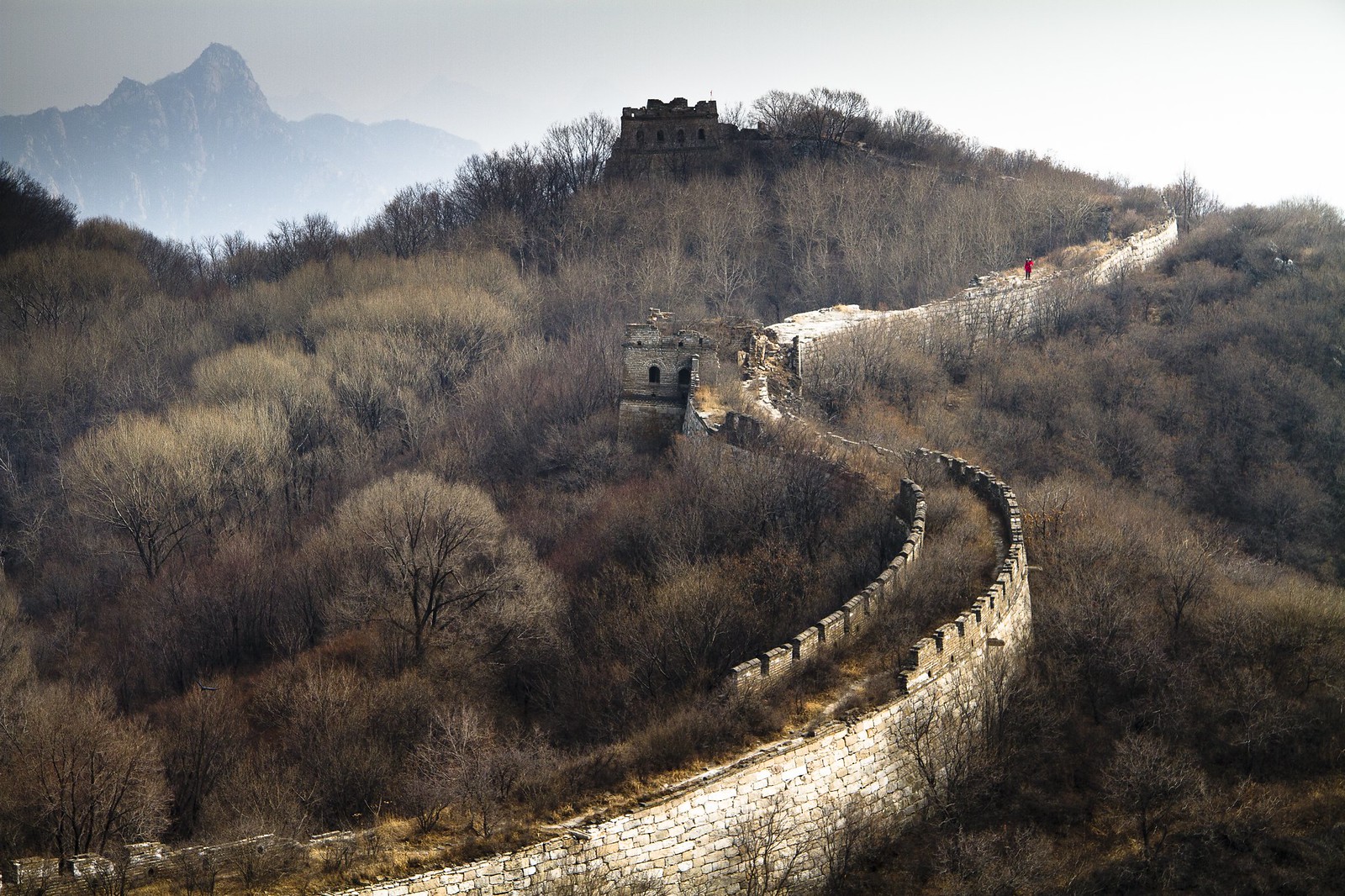
Great Wall at Mutianyu. The great wall - not yet reconstructed.: photo by niragag, 7 February 2011

Great Wall at Mutianyu. The great wall - not yet reconstructed.: photo by niragag, 7 February 2011

Great Wall at Mutianyu. The great wall - not yet reconstructed.: photo by niragag, 7 February 2011

The Construction of the Tower of Babel (The "little" Tower of Babel): Pieter Bruegel the Elder, c. 1563 (Museum Boijmans Van Beuningen, Rotterdam)

The Construction of the Tower of Babel (The "little" Tower of Babel): Pieter Bruegel the Elder, c. 1563 (Museum Boijmans Van Beuningen, Rotterdam

The Construction of the Tower of Babel (The "little" Tower of Babel) (detail): Pieter Bruegel the Elder, c. 1563 (Museum Boijmans Van Beuningen, Rotterdam

The Construction of the Tower of Babel (The "little" Tower of Babel) (detail): Pieter Bruegel the Elder, c. 1563 (Museum Boijmans Van Beuningen, Rotterdam
Franz Kafka: The Great Wall of China
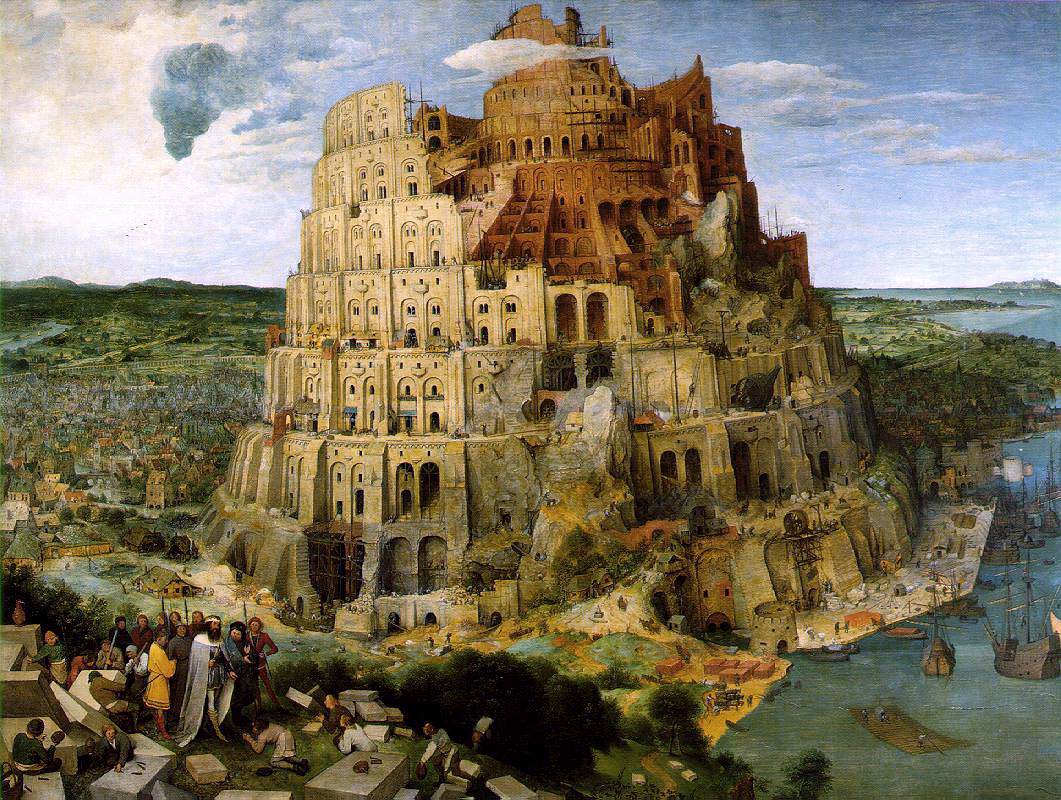
The Tower of Babel: Pieter Bruegel the Elder, 1563 (Kunsthistorisches Museum, Vienna)
First,
it has to be said that achievements were brought to fruition at that
time which rank slightly behind the Tower of Babel, although in the
pleasure they gave to God, at least by human reckoning, they made an
impression exactly the opposite of that structure. I mention this
because at the time construction was beginning a scholar wrote a book
in which he drew this comparison very precisely. In it he tried to show
that the Tower of Babel had failed to attain its goal not at all for
the reasons commonly asserted, or at least that the most important
causes were not among these well-known ones. He not only based his
proofs on texts and reports, but also claimed to have carried out
personal inspections of the location and thus to have found that the
structure collapsed and had to collapse because of the weakness of its
foundation. And it is true that in this respect our age was far
superior to that one long ago. Almost every educated person in our age
was a mason by profession and infallible when it came to the business of
laying foundations. But it was not at all the scholar’s aim to prove
this. Instead he claimed that the great wall alone would for the first
time in the age of human beings create a secure foundation for a new
Tower of Babel. So first the wall and then the tower. In
those days the book was in everyone’s hands, but I confess that even
today I do not understand exactly how he imagined this tower. How could
the wall, which never once took the form of a circle but only a sort
of quarter or half circle, provide the foundation for a tower? But it
could be meant only in a spiritual sense. But then why the wall, which
was something real, a product of the efforts and lives of hundreds of
thousands of people? And why were there plans in the book—admittedly
hazy plans—sketching the tower, as well as detailed proposals about how
the energies of the people could be strictly channeled into the new
work in the future?

The Construction of the Tower of Babel (The "little" Tower of Babel), detail: Pieter Bruegel the Elder, c. 1563 (Museum Boijmans Van Beuningen, Rotterdam)
There
was a great deal of mental confusion at the time—this book is only one
example—perhaps for the simple reason that so many people were trying
as hard as they could to join together for a single purpose. Human
nature, which is fundamentally careless and by nature like the whirling
dust, endures no restraint. If
it restricts itself, it will soon begin to shake the restraints madly
and tear up walls, chains, and even itself in every direction.
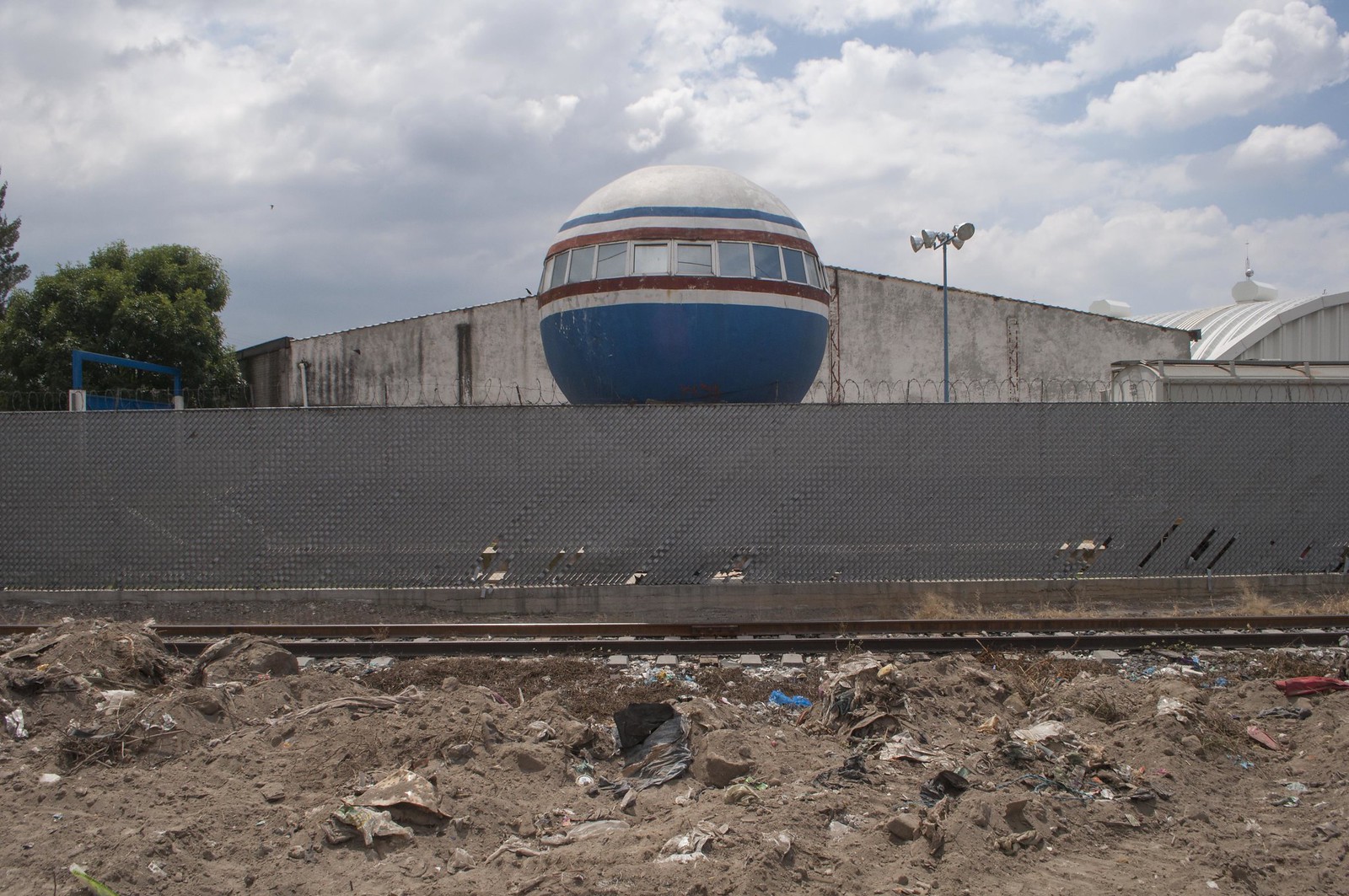
[Untitled]: photo by Tonatiuh Cabello, 22 September 2015

[Untitled]: photo by Tonatiuh Cabello, 22 September 2015
It
is possible that even these considerations, which argued against
building the wall in the first place, were not ignored by the
leadership when they decided on piecemeal construction. We—and here I’m
really speaking on behalf of many—actually first found out about it by
spelling out the orders from the highest levels of management and
learned for ourselves that without the leadership neither our school
learning nor our human understanding would have been adequate for the
small position we had within the enormous totality. In the office of
the leadership—where it was and who sat there no one I asked knows or
knew—in this office I imagine that all human thoughts and wishes revolve
in a circle, and all human aims and fulfillments in a circle going in
the opposite direction. But through the window the reflection of the
divine worlds fell onto the hands of the leadership as they drew up the
plans.
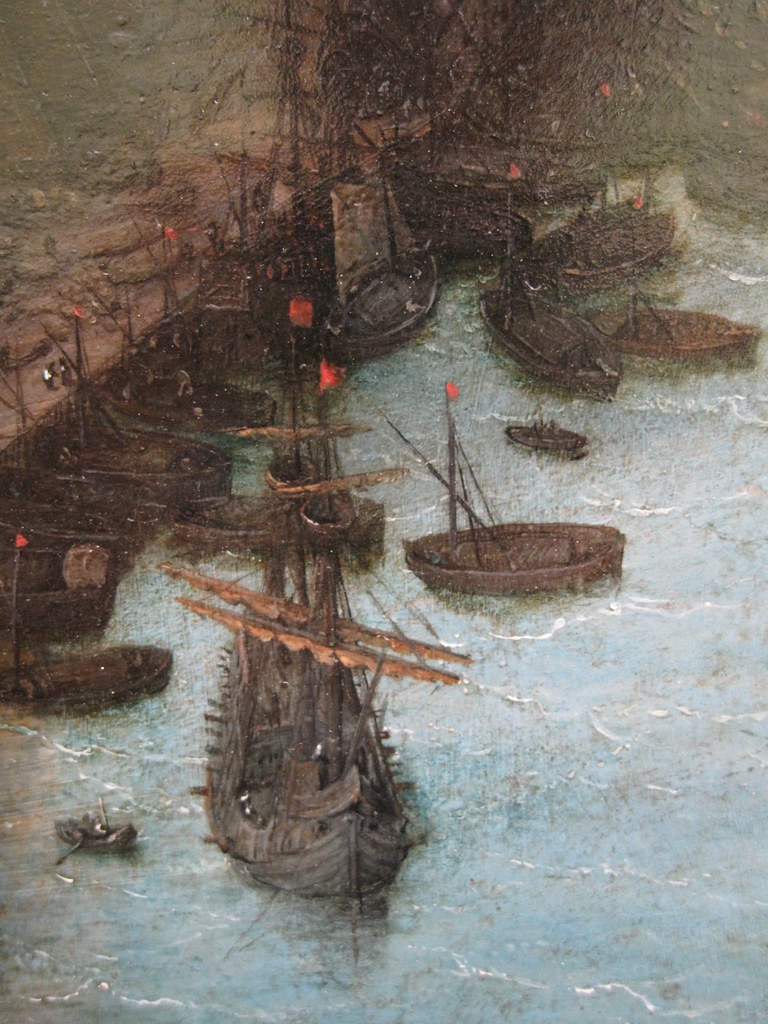
The Construction of the Tower of Babel (The "little" Tower of Babel), detail: Pieter Bruegel the Elder, c. 1563 (Museum Boijmans Van Beuningen, Rotterdam)
And
for this reason the incorruptible observer will reject the notion that
if the leadership had seriously wanted a continuous construction of
the wall, they would not have been able to overcome the difficulties
standing in the way. So the only conclusion left is that the leadership
deliberately chose piecemeal construction. But building in sections
was something merely makeshift and impractical. So the conclusion
remains that the leadership wanted something impractical. An odd
conclusion! True enough, and yet from another perspective it had some
inherent justification. Nowadays one can perhaps speak about it without
danger. At that time for many people, even the best, there was a secret
principle: Try with all your powers to understand the orders of the
leadership, but only up to a certain limit—then stop thinking about
them. A very reasonable principle, which incidentally found an even
wider interpretation in a later often repeated comparison:
Stop further thinking, not because it could harm you—it is not at all
certain that it will harm you. In this matter one cannot speak in
general about harming or not harming. What will happen to you is like a
river in spring. It rises, grows stronger, eats away more powerfully
at the land along its banks, and still maintains its own course down to
the sea and is more welcome as a fitter partner for the sea. Reflect
upon the orders of the leadership as far as that. But then the river
overflows its banks, loses its form and shape, slows down its forward
movement, tries, contrary to its destiny, to form small seas inland,
damages the fields, and yet cannot maintain its expansion long, but
runs back within its banks, in fact, even dries up miserably in the hot
time of year which follows. Do not reflect on the orders of the
leadership to that extent.
![[Cn1202-03.jpg]](https://blogger.googleusercontent.com/img/b/R29vZ2xl/AVvXsEhqDenj5zWCzlesHxwy3lVpd9NMvxX3xLH1Q5e1j-H80dElGkpuoQ46gBB9fm9SHUQ7VpYHHKJb1Ce2bbctMSj7UAOqXscfhdP6sy51JQsrbqihffBZR4A4z8UUuvzsa8od6UD11dfZ2So/s1600/Cn1202-03.jpg)
The first turn of the Yangtze, at Shigu, Yunnan Province: photo by Jialiang Gao, 2003
Now,
this comparison may perhaps have been extraordinarily apt during the
construction of the wall, but it has at least only a limited relevance
to my present report. For my investigation is merely historical. There
is no lightning strike flashing any more from storm clouds which have
long since vanished, and thus I may seek an explanation for the
piecemeal construction which goes further than the one people were
satisfied with back then. The limits which my
ability to think sets for me are certainly narrow enough, but the
region one would have to pass through here is endless.

The Tower of Babel (detail): Pieter Bruegel the Elder, 1563, oil on oak panel (Kunsthistorisches Museum, Vienna)
Against whom was the great wall to provide protection? Against the people of the north. I
come from south-east China. No northern people can threaten us there.
We read about them in the books of the ancients. The atrocities which
their nature prompts them to commit make us heave a sigh on our
peaceful porches. In the faithfully accurate pictures of artists we see
these faces of damnation, with their mouths flung open, the sharp
pointed teeth stuck in their jaws, their straining eyes, which seem to
be squinting for someone to seize, someone their jaws will crush and
rip to pieces. When children are naughty, we hold up these pictures in
front of them, and they immediately burst into tears and run into our
arms. But we know nothing else about these northern lands. We have never
seen them, and if we remain in our village, we never will see them,
even if they charge straight at us and hunt us on their wild horses.
The land is so huge, it would not permit them to reach us, and they
would lose themselves in the empty air.

The Construction of the Tower of Babel (The "little" Tower of Babel), detail: Pieter Bruegel the Elder, c. 1563 (Museum Boijmans Van Beuningen, Rotterdam)
So
if things are like this, why do we leave our homeland, the river and
bridges, our mothers and fathers, our crying wives, our children in
need of education, and go away to school in the distant city, with our
thoughts on the wall to the north, even further away? Why? Ask the
leadership. They know us. As they mull over their immense concerns,
they know about us, understand our small worries, see us all sitting
together in our humble huts, and approve or disapprove of the prayer
which the father of the house says in the evening in the circle of his
family. And if I may be permitted such ideas about the leadership, then I
must say that in my view the leadership existed even earlier. It did
not come together like some high mandarins quickly summoned to a
meeting by a beautiful dream of the future, something hastily
concluded, a meeting which by evening saw to it that the general
population was driven from their beds by a knocking on the door so that
they could carry out the decision, even if it was only to set up a
lantern in honour of a god who had shown favour to the masters the day
before, so that he could thrash them in some dark corner the next day,
when the lantern had only just died out. On the contrary, I imagine the
leadership has existed since time immemorial, along with the decision
to construct the wall as well. Innocent northern people believed they
were the cause; the admirable and innocent emperor believed he had
given orders for it. We who were builders of the wall know otherwise
and are silent.

The Tower of Babel (detail): Pieter Bruegel the Elder, 1563, oil on oak panel (Kunsthistorisches Museum, Vienna)
Even back then during the construction of the wall and afterwards, right up to the present day, I have devoted myself almost exclusively to the histories of different people. There are certain questions for which one can, to some extent, get to the heart of the matter only in this way. Using this method I have found that we Chinese possess certain popular and state institutions which are uniquely clear and, then again, others which are uniquely obscure. Tracking down the reasons for these, especially for the latter phenomena, always appealed to me, and still does, and the construction of the wall is fundamentally concerned with these issues.
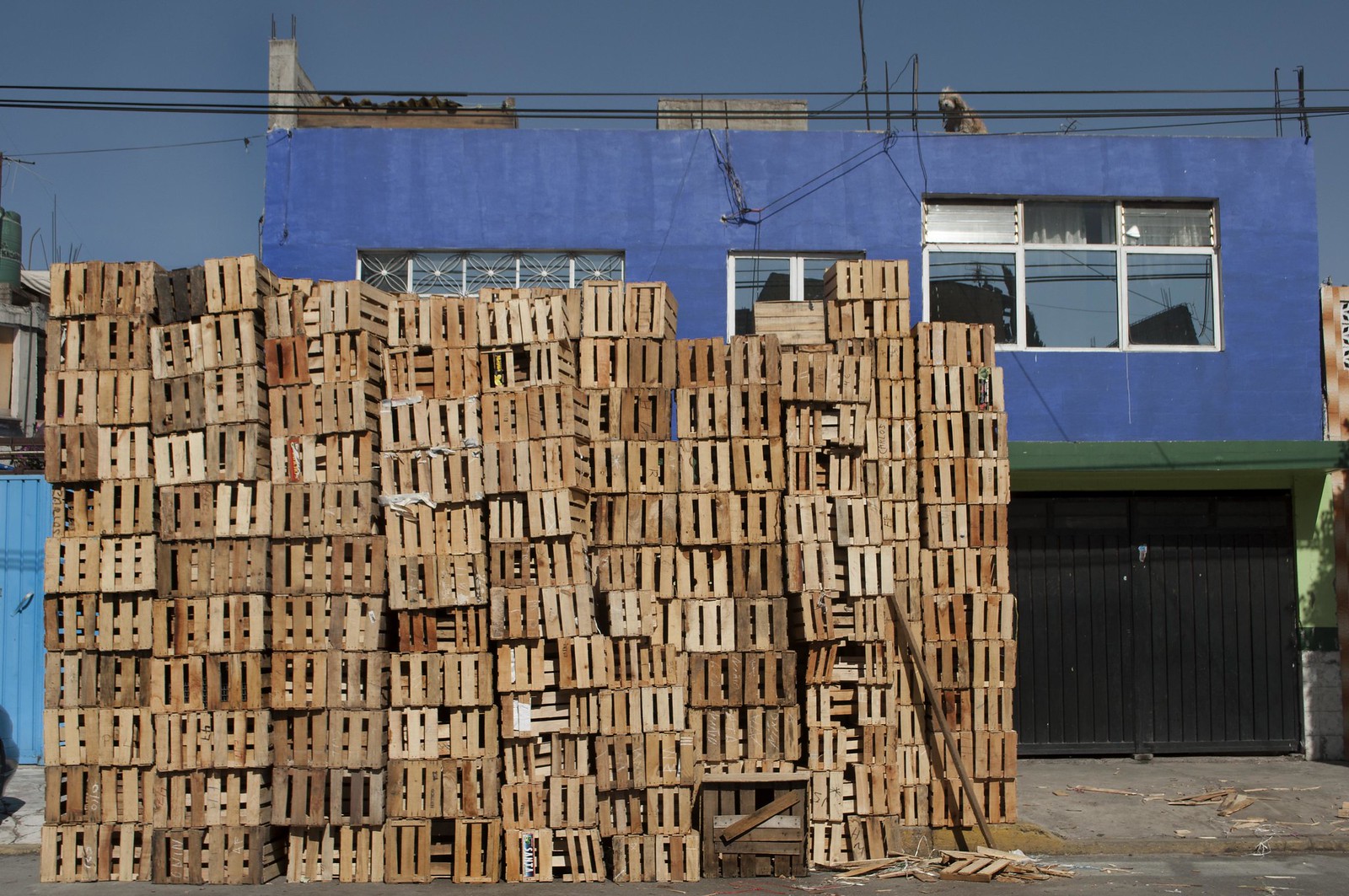
Nezahualcóyoltl, Mexico: photo by Tonatiuh Cabello, 30 May 2012
Now,
among our most obscure institutions one can certainly include the
empire itself. Of course, in Peking, right in the court, there is some
clarity about it, although even this is more apparent than real. And
the teachers of constitutional law and history in the high schools give
out that they are precisely informed about these things and that they
are able to pass this knowledge on to their students. The deeper one
descends into the lower schools, the more the doubts about the
students’ own knowledge understandably disappear, and a superficial
education surges up as high as a mountain around a few precepts drilled
into them for centuries, sayings which, in fact, have lost nothing of
their eternal truth, but which remain also eternally unrecognized in
this mist and fog.
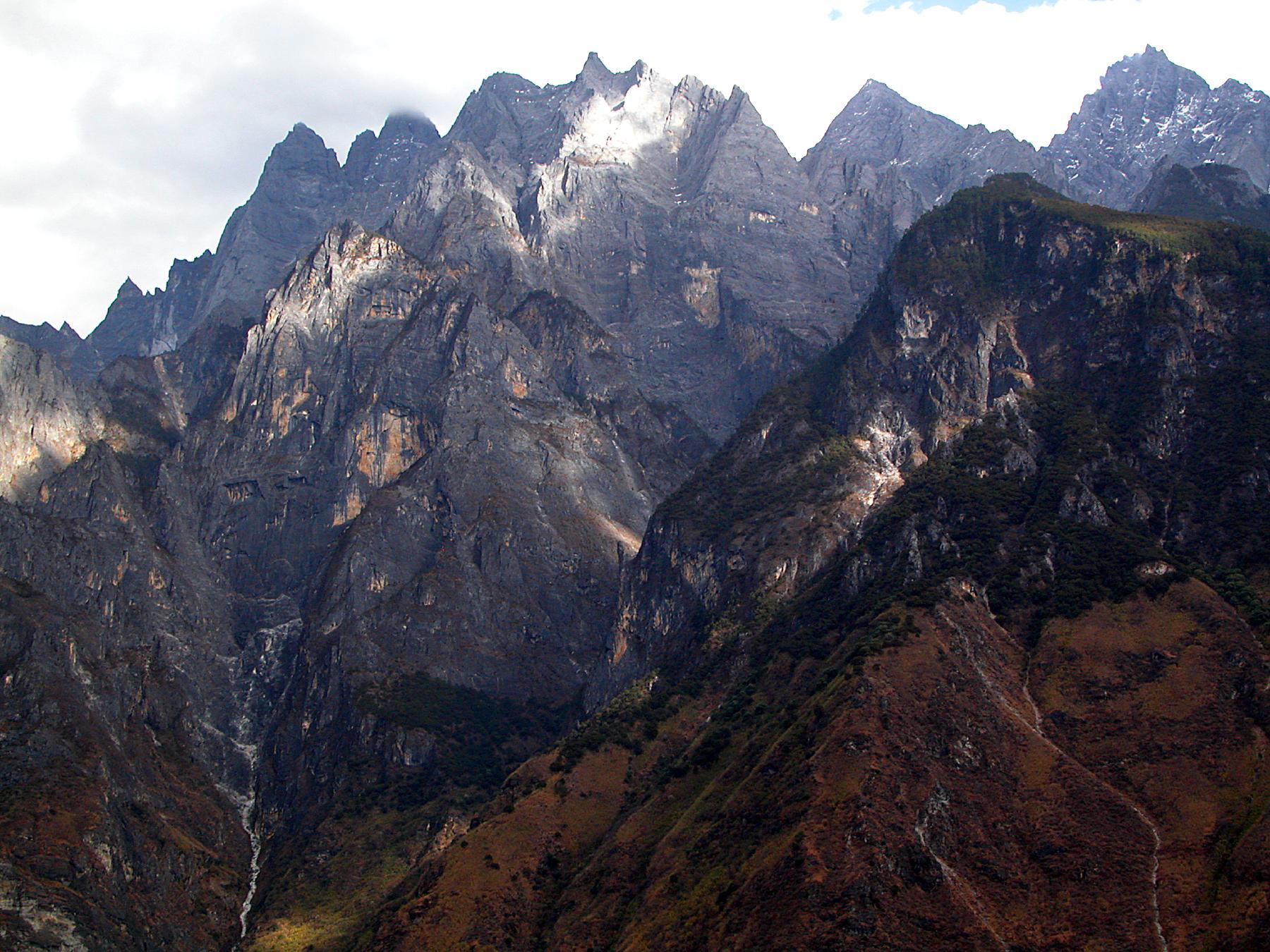
Afternoon light on the gorge of the Yangzi River, Yunnan Province: photo by Peter Morgan, 2005
But,
in my view, it’s precisely the empire we should be asking the people
about, because in them the empire has its final support. It’s true that
in this matter I can speak once again only about my own homeland.
Other than the agricultural deities and the service to them, which so
beautifully and variously fills up the entire year, our thinking
concerns itself only with the emperor. But not with the present emperor. We
would have concerned ourselves with the present one if we had
recognized who he was or had known anything definite about him. We were
naturally always trying—and it’s the single curiosity which consumed
us—to find out something or other about him, but, no matter how strange
this sounds, it was hardly possible to learn anything, either from
pilgrims, even though they wandered through much of our land, or from
the close or remote villages, or from boatmen, although they have
travelled not merely on our little waterways but also on the sacred
rivers. Of course, we heard a great deal, but could gather nothing from
the many details.


The Construction of the Tower of Babel (The "little" Tower of Babel), detail: Pieter Bruegel the Elder, c. 1563 (Museum Boijmans Van Beuningen, Rotterdam)
Our
land is so huge, that no fairy tale can adequately deal with its size.
Heaven hardly covers it all. And Peking is only a point, the imperial
palace only a tiny dot. It’s true that, by contrast, throughout all the
different levels of the world the emperor, as emperor, is great. But
the living emperor, a human being like us, lies on a peaceful bed, just
as we do. It is, no doubt, of ample proportions, but it could be
merely narrow and short. Like us, he sometimes stretches out his limbs
and, if he is very tired, yawns with his delicately delineated mouth.
But how are we to know about that thousands of miles to the south,
where we almost border on the Tibetan highlands? Besides, any report
which might come, even if it reached us, would get there much too late
and would be long out of date. Around the emperor the glittering and
yet murky court throngs—malice and enmity clothed as servants and
friends, the counterbalance to the imperial power, with their poisoned
arrows always trying to shoot the emperor down from his side of the
balance scales. The empire is immortal, but the individual emperor
falls and collapses. Even entire dynasties finally sink down and
breathe their one last death rattle. The people will never know
anything about these struggles and suffering. Like those who have come
too late, like strangers to the city, they stand at the end of the
thickly populated side alleyways, quietly living off the provisions
they have brought with them, while far off in the market place right in
the middle foreground the execution of their master is taking place.
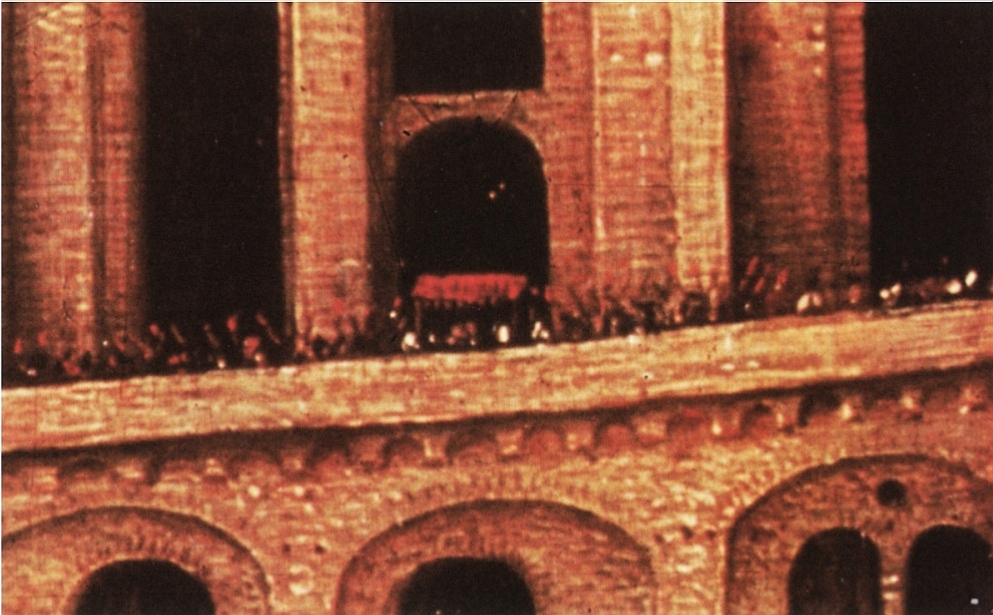
The Construction of the Tower of Babel (The "little" Tower of Babel), detail: Pieter Bruegel the Elder, c. 1563 (Museum Boijmans Van Beuningen, Rotterdam)
There
is a legend which expresses this relationship well. The Emperor—so
they say—has sent a message, directly from his death bed, to you alone,
his pathetic subject, a tiny
shadow which has taken refuge at the furthest distance from the imperial
sun. He ordered the herald to kneel down beside his death bed and
whispered the message to him. He thought it was so important that he
had the herald repeat it back to him. He confirmed the accuracy of the
verbal message by nodding his head. And in front of the entire crowd of
those who have come to witness his death—all the obstructing walls
have been broken down and all the great ones of his empire are standing
in a circle on the broad and high soaring flights of stairs—in front
of all of them he dispatched his herald. The messenger started off at
once, a powerful, tireless man. Sticking one arm out and then another,
he makes his way through the crowd. If he runs into resistance, he
points to his breast where there is a sign of the sun. So he moves
forward easily, unlike anyone else. But the crowd is so huge; its
dwelling places are infinite. If there were an open field, how he would
fly along, and soon you would hear the marvelous pounding of his fist
on your door. But instead of that, how futile are all his efforts. He
is still forcing his way through the private rooms of the innermost
palace. He will never win his way through. And if he did manage that,
nothing would have been achieved. He would have to fight his way down
the steps, and, if he managed to do that, nothing would have been
achieved. He would have to stride through the courtyards, and after the
courtyards the second palace encircling the first, and, then again,
stairs and courtyards, and then, once again, a palace, and so on for
thousands of years. And if he finally did burst through the outermost
door—but that can never, never happen—the royal capital city, the
centre of the world, is still there in front of him, piled high and full
of sediment. No one pushes his way through here, certainly not with a
message from a dead man. But you sit at your window and dream to
yourself of that message when evening comes.

The Construction of the Tower of Babel (The "little" Tower of Babel): Pieter Bruegel the Elder, c. 1563 (Museum Boijmans Van Beuningen, Rotterdam)
Indeed,
procrastination is the true meaning of that noteworthy and often
striking fullness of detail which according to Max Brod lay at the heart
of Kafka's search for perfection and the true way. Brod observes: "Of
all the aspects of life to be taken seriously, we may say what a girl
in Das Schloss
says of the enigmatic letters from the authorities -- namely that 'the
reflections to which they give rise are interminable.'" But what Kafka
enjoys about these interminable reflections is the very fear that they
might come to an end.
Walter Benjamin: Franz Kafka: Beim Bau der Chinesischen Mauer (The Great Wall of China), radio talk broadcast July 1931, translated by Rodney Livingstone in Selected Writings, Volume 2: 1927-1934, 1999
Zeno of Elea's Racecourse Paradox: Suppose a runner needs to travel
from a start S to a finish F. To do this he must first travel to the
midpoint, M, and thence to F: but if N is the midpoint of SM, he must
first travel to N, and so on ad infinitum (Zeno: ‘what has been
said once can always be repeated’). But it is impossible to accomplish
an infinite number of tasks in a finite time. Therefore the runner
cannot complete (or start) his journey.
Oxford Dictionary of Philosophy
Oxford Dictionary of Philosophy

A boy peeks out of the window of his house in Nuevo Laredo, Tamaulipas state, Mexico, across the border from Laredo in the U.S, on Friday: photo by Rodrigo Abd/AP, 24 March 2017
"I would just move the company"

Ironhorse
loads up for the NTC. The 297th Inland Cargo Transfer Company, 180th
Transportation Battalion, 13th Sustainment Command helps Company A of
the 115th "Muleskinner" Brigade Combat Team, 1st Cavalry Division load
and transport shipping containers to Fort Hood's railhead in preparation
for the National Training Center.: U. S. Army photo by Pfc. Paige Pendleton, 1st Battalion Combat Team PAQ, 1st Cavalry Division, 14 January 2014
The beauty pageant to build Trump's border wall is beginning: Proposal deadline is first step in a process that combines three of
the president’s most successful ventures: pageants, reality TV
competitions and xenophobia: Julia Carrie Wong in San Francisco for The Guardian, 29 March 2017
Wednesday marks the deadline for the hundreds of companies interested in building Donald Trump’s signature campaign promise – a “great, great wall” on the US-Mexico border – to submit concept papers detailing their proposals.
It is the first step in a process that promises to combine
three of Trump’s most successful ventures: beauty pageants, reality TV
competitions and xenophobia.
After an initial elimination round, the remaining
contestants will submit more detailed technical proposals. Another round
of cuts will ensue, and then a group of finalists will convene in San
Diego, California, to construct both a 30ft-long prototype of their
design and a 10ft by 10ft “mock-up” that will be used by the government
to “test and evaluate the anti-destruct characteristics” of the design.
Think of it as a swimsuit competition followed by a
high-stakes Apprentice challenge. Those who can withstand the battering
ram for at least 90 minutes while also being “aesthetically pleasing”
(on the US-facing side) have a shot at winning a lucrative piece of one
of the US government’s largest infrastructure projects in decades.
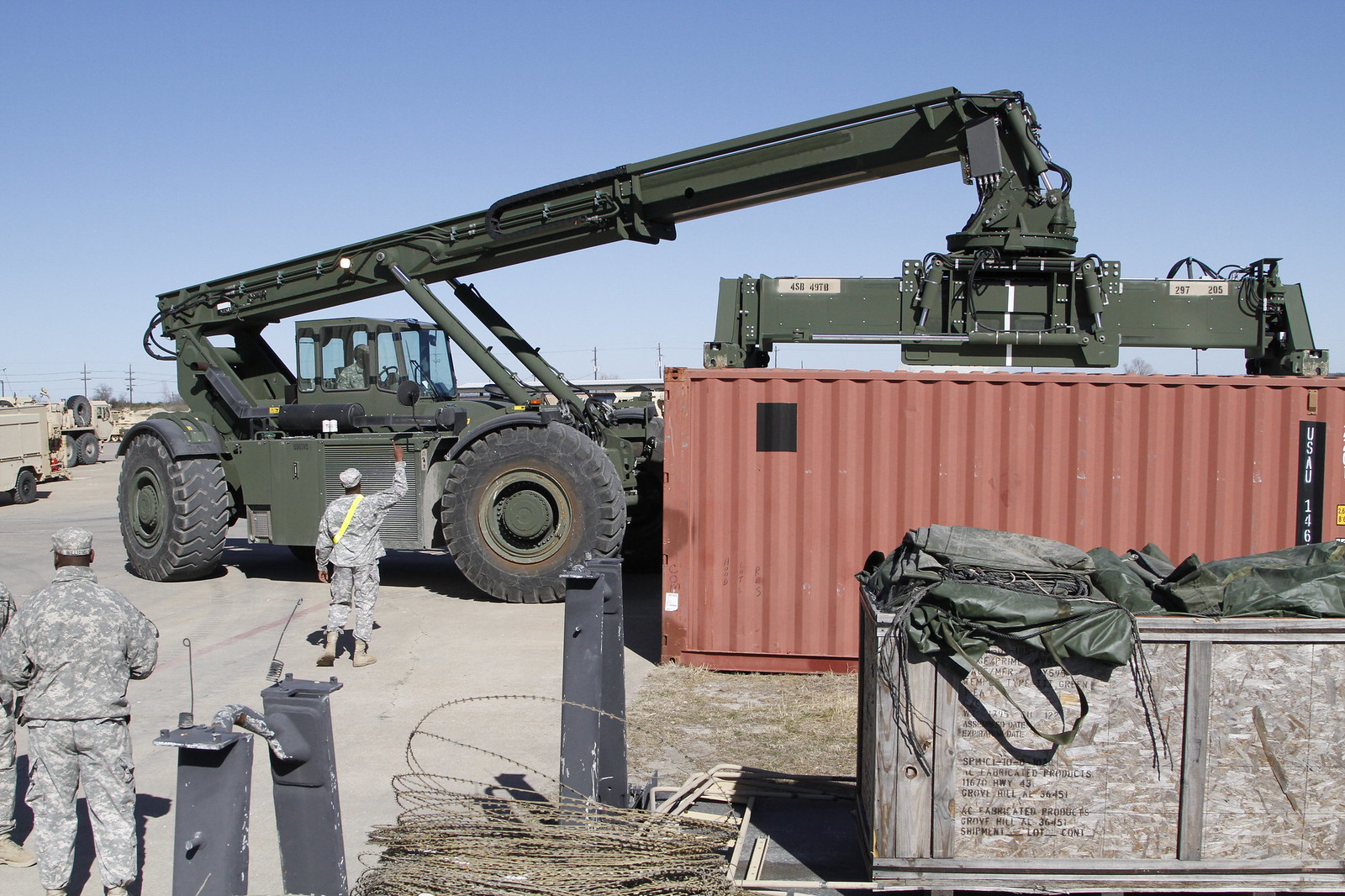

Ironhorse
loads up for the NTC. The 297th Inland Cargo Transfer Company, 180th
Transportation Battalion, 13th Sustainment Command helps Company A of
the 115th "Muleskinner" Brigade Combat Team, 1st Cavalry Division load
and transport shipping containers to Fort Hood's railhead in preparation
for the National Training Center.: U. S. Army photo by Pfc. Paige Pendleton, 1st Battalion Combat Team PAQ, 1st Cavalry Division, 14 January 2014
The government’s initial pre-solicitation notice for the border wall asked for 30ft-tall “concrete wall structures”, but
when the request for proposals was published on 17 March, the scope was
expanded to allow for “other” proposals. So while some companies will
move ahead with reinforced concrete, others can put forward ideas for
alternative materials.
All proposals must meet some baseline standards, including
being “physically imposing in height” with “anti-climb” features and
“aesthetically pleasing” color on the north side. Non-concrete walls are
also required to have a “see-through component” to increase
“situational awareness”.
Matt Kaye of Integrated Security Corporation plans to submit a proposal with a group of other companies
that calls for two chain-link fences with a “no man’s land in between”
and his company’s intrusion detection systems in place. Kaye described
the concept as a “typical correctional type fence” (his company has
contracted for federal, state and local prisons) and said it would be
“far less expensive and far less intrusive” than a concrete wall.
Liz Derr, the founder and CEO of artificial intelligence
company Simularity, is proposing an “invisible or virtual wall” that
uses AI software to analyze satellite and surveillance imagery to
identify unusual activities.
Derr, who said that her company is “pro-immigration” and
“pro-diversity”, argued that a hi-tech solution to border security could
provide a 90% saving to the government, though she assumed her concept
would not be chosen since it does not include any physical barrier.

Kalmar Rough Terrain Center has an alternative idea for that physical barrier: shipping containers.: photo by Steve Speakes / Kalmar via The Guardian, 29 March 2017
Steve
Speakes, the president and CEO of Kalmar Rough Terrain
Center, has an alternative idea for that physical barrier: shipping
containers. Kalmar produces machines that can move shipping containers
in difficult terrain, so Speakes is hoping that any winning contractor
will be interested in his equipment. But he also strongly approved of
the idea of using the containers themselves as the building blocks for
the wall – as was proposed by a Florida architecture firm earlier this
year. The “sustainable” design drew immediate backlash (one
architecture site called it “the Bushwick of xenophobic nationalism”),
but Speakes defended the concept.
“That
is a very reasonable way to build a wall,” he said, noting that there
is a surplus of containers available now due to a slowdown in global
commerce.
Notably
absent from the list of interested contractors are any of the large,
multinational corporations that would probably have the capacity to
carry out the 1,000, $21bn project.
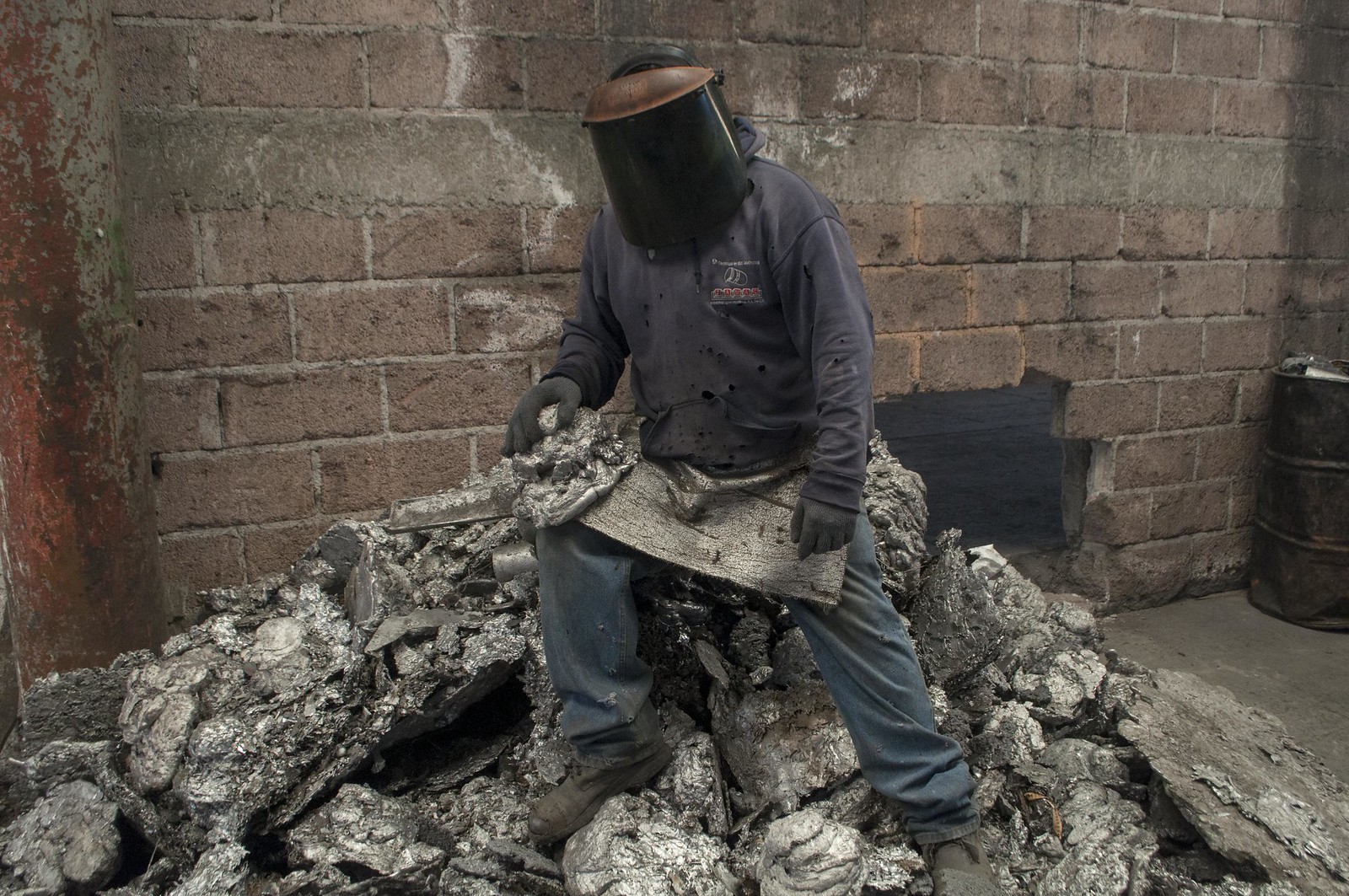

[Untitled]: photo by Tonatiuh Cabello, 3 August 2015
Such
companies may be put off by toxic politics surrounding
the project (62% of Americans oppose building the wall, according to a
February poll by the Pew Research Center), and the difficult path to
actually funding
it. The lack of name-brand bidders and challenge of getting the wall
through Congress have led some to speculate that the San Diego prototype
pageant will be as far as the project ever gets.
“The wall was a campaign promise,” said Phil Ting, a state
assembly member from California. “The administration is probably trying
to do the absolute minimum to gain the maximum press. I can see why
they’d want to cause the biggest possible splash, and then go quietly
away.”
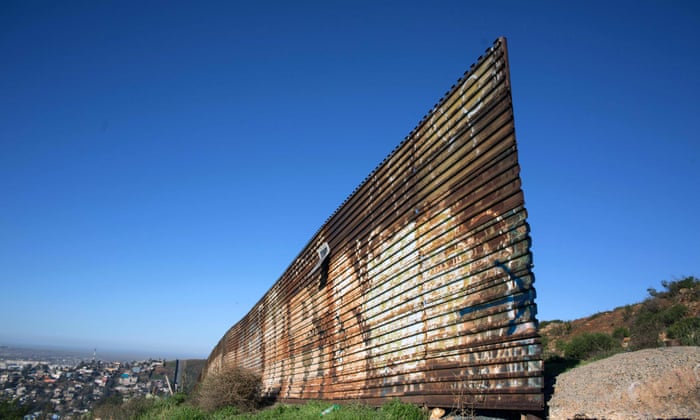
After an initial elimination round, the remaining contestants will submit more detailed technical proposals for the wall: photo by Guillermo Arias/AFP via The Guardian, 29 March 2017

After an initial elimination round, the remaining contestants will submit more detailed technical proposals for the wall: photo by Guillermo Arias/AFP via The Guardian, 29 March 2017
Ting, a Democrat from San Francisco, is one of several state
and local legislators who are hoping to scare off potential bidders for
the project with threats of blacklists and divestment.
“We don’t want a single California cent going toward building this wall,” Ting said of the Resist Wall Act, which would require the state’s two giant pension funds to divest from any companies that take part in building the wall. Ting compared the measure to the divestment campaigns against Apartheid South Africa.
Lawmakers
in other states, including New York, Illinois and Arizona,
have proposed barring any involved companies from receiving state
contracts. The city of Berkeley, California, has already passed a
boycott measure, and other municipalities are considering following
suit.
Companies on the other side of the border are facing pressure as well. The Mexican government warned
of reputational damage to firms that might be interest in providing
materials for the wall, such as Cemex, a Mexican cement producer. The
Catholic archdiocese of Mexico wrote
in an op-ed that any participating company would be “immoral” and that
its shareholders and owners “should be considered traitors to the
homeland”.

Nezahualcóyoltl, Mexico: photo by Tonatiuh Cabello, 30 May 2012

Nezahualcóyoltl, Mexico: photo by Tonatiuh Cabello, 30 May 2012
Still, some businessmen are more interested in the morality
of employing their workers than the morality of keeping out migrants.
Speake, who said he’s had to lay off employees over the past two years,
said the opportunity to work on the wall was “heaven sent”.
Ron Schoenheit, the president of Cascade Coil, an
Oregon-based company that makes woven wire products, said that he would
not be deterred by backlash.
“If we did get some work on this project and people found
out about it, as liberal as the city of Portland is, they would probably
come burn our factory down,” he said. But that wouldn’t stop him, he
said.
“If it was a big contract, I would just move the company.”
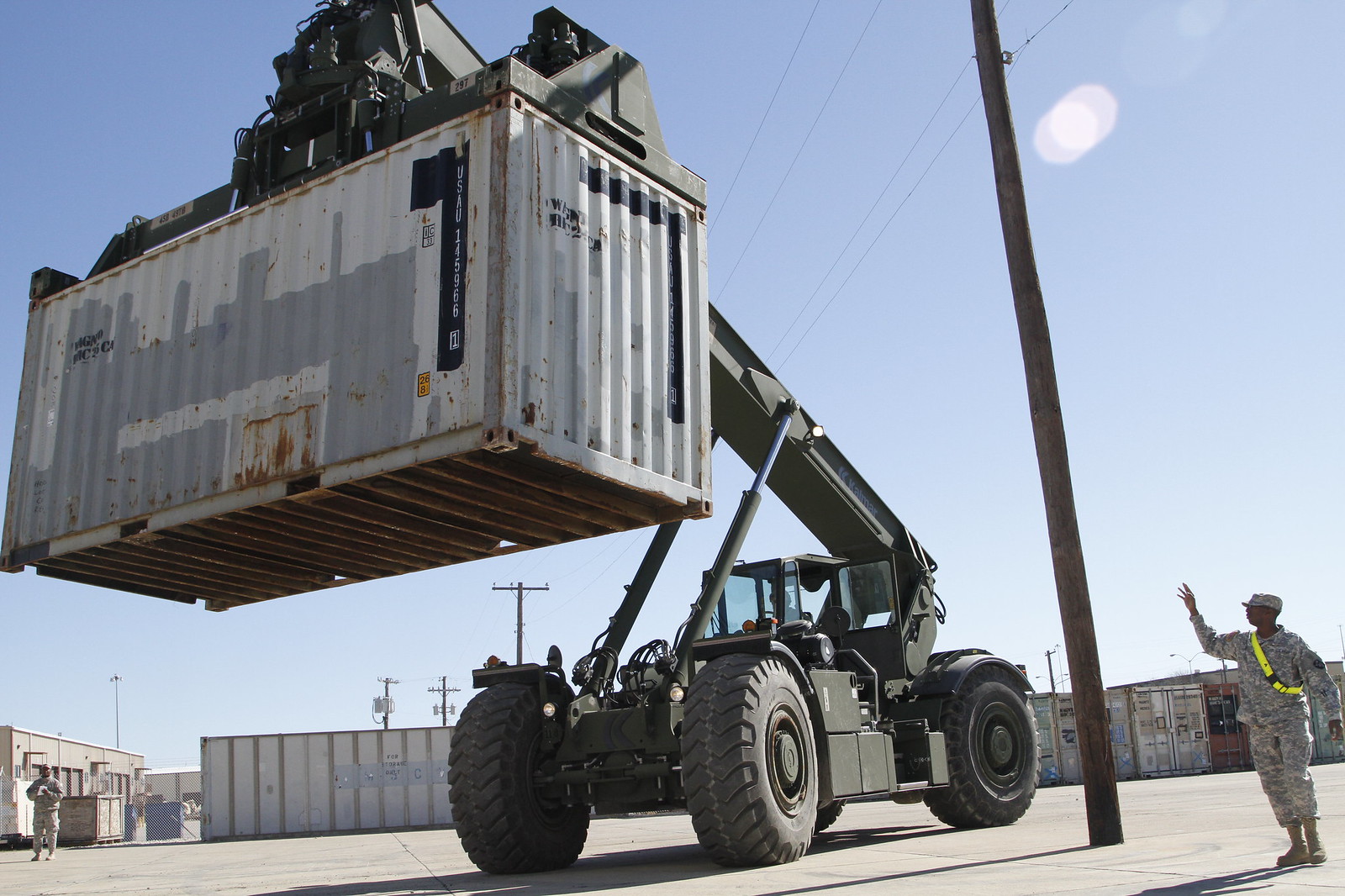
Ironhorse loads up for the NTC. The 297th Inland Cargo Transfer Company, 180th Transportation Battalion, 13th Sustainment Command helps Company A of the 115th "Muleskinner" Brigade Combat Team, 1st Cavalry Division load and transport shipping containers to Fort Hood's railhead in preparation for the National Training Center.: U. S. Army photo by Pfc. Paige Pendleton, 1st Battalion Combat Team PAQ, 1st Cavalry Division, 14 January 2014
from Kafka's Diaries: The real fun side of writing


The Tower of Babel (detail): Pieter Bruegel the Elder, 1563, oil on oak panel (Kunsthistorisches Museum, Vienna)
I am powerless.
I am powerless.

The Tower of Babel (detail): Pieter Bruegel the Elder, 1563, oil on oak panel (Kunsthistorisches Museum, Vienna)
Complete standstill. Unending torments.

The Tower of Babel (detail): Pieter Bruegel the Elder, 1563, oil on oak panel (Kunsthistorisches Museum, Vienna)
How time flies; another ten days, and I have achieved nothing.

The Tower of Babel (detail): Pieter Bruegel the Elder, 1563, oil on oak panel (Kunsthistorisches Museum, Vienna)
A page now and then is successful, but I can't keep it up.

The Tower of Babel (detail): Pieter Bruegel the Elder, 1563, oil on oak panel (Kunsthistorisches Museum, Vienna)
A page now and then. The next day I am powerless.

The Tower of Babel (detail): Pieter Bruegel the Elder, 1563, oil on oak panel (Kunsthistorisches Museum, Vienna)
Complete standstill.

The Tower of Babel (detail): Pieter Bruegel the Elder, 1563, oil on oak panel (Kunsthistorisches Museum, Vienna)
I can't keep it up.
I can't keep it up.

The Tower of Babel (detail): Pieter Bruegel the Elder, 1563, oil on oak panel (Kunsthistorisches Museum, Vienna)
You have to dive down, as it were,
and sink more rapidly
than that which sinks in advance of you.

The Tower of Babel (detail): Pieter Bruegel the Elder, 1563, oil on oak panel (Kunsthistorisches Museum, Vienna)
You have to dive down, as it were.
You have to dive down, as it were.

The Tower of Babel (detail): Pieter Bruegel the Elder, 1563, oil on oak panel (Kunsthistorisches Museum, Vienna)

Kafka's diaries show the real fun side of writing.: image via Matt Haig @matthaig1, 19 March 2017


Por aquí no pasó Dios: photo by Tonatiuh Cabello, 24 September 2015

A boy peeks out of the window of his house in Nuevo Laredo, Tamaulipas state, Mexico, across the border from Laredo in the U.S, on Friday: photo by Rodrigo Abd/AP, 24 March 2017
[Untitled]: photo by Tonatiuh Cabello, 4 March 2017



